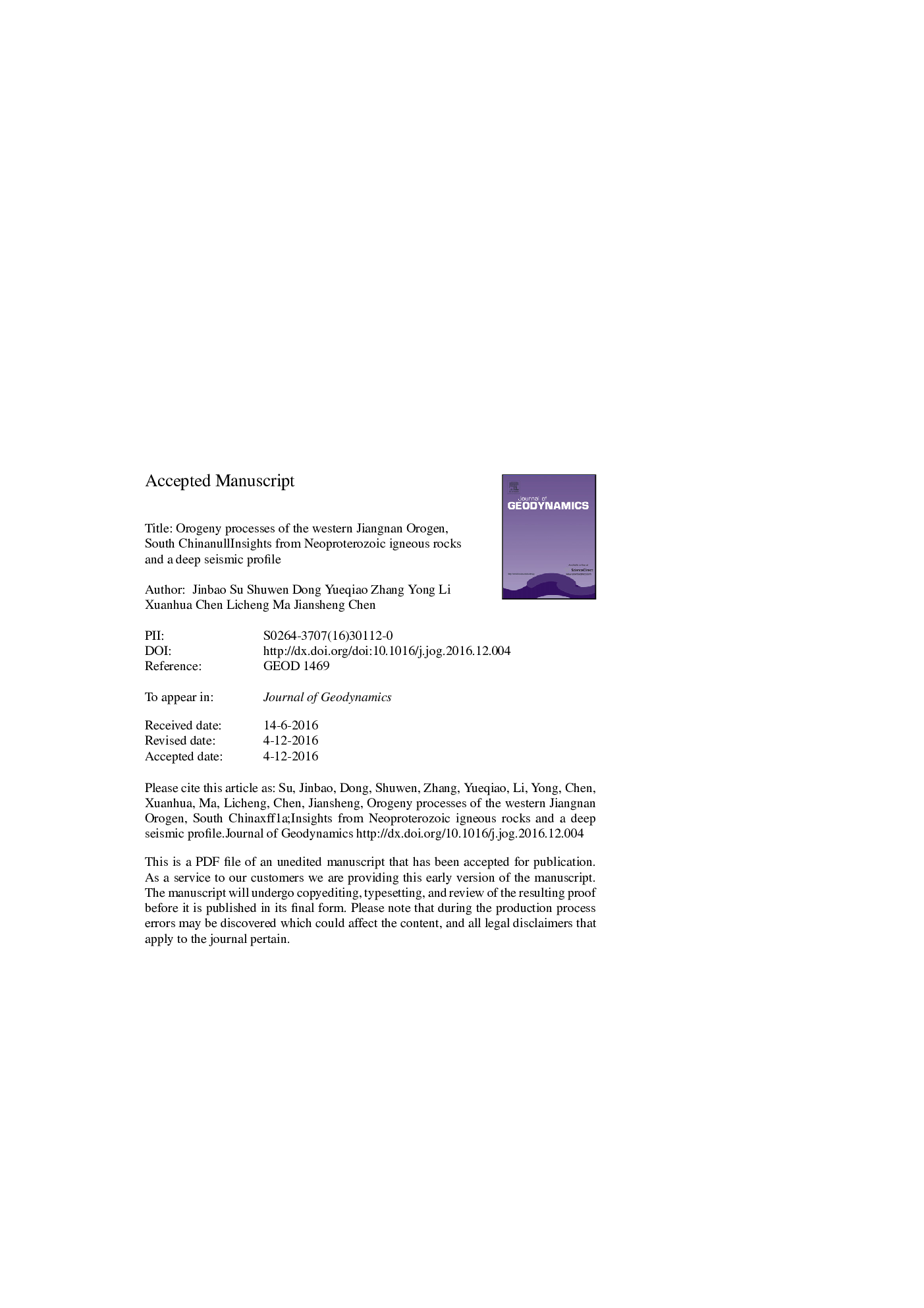| Article ID | Journal | Published Year | Pages | File Type |
|---|---|---|---|---|
| 5781229 | Journal of Geodynamics | 2017 | 46 Pages |
Abstract
The Jiangnan Orogen is a collisional suture belt between the Yangtze and Cathaysia Blocks in South China, with many unanswered questions regarding its tectonic evolution. Using the basement structure of the Jiangnan Orogen, we investigate the granite and dacite exposed along the western Jiangnan Orogen and present new LA-ICP-MS zircon U-Pb ages, Hf isotopes, and whole rock geochemistry data. The results suggest that the granite plutons belong to the calc-alkaline series and are typical S-type granites. It yields a mean U-Pb age of 854 ± 2 Ma, which is determined from the core of zircon and possibly inherited from its source or wall rocks. The initial emplacement age of granite may be 826-805 Ma, whereas the dacites yield an age of 805 ± 1.6 Ma and belong to the shoshonite series. The initial Hf-isotope ratios (176Hf/177Hf) in the granite sample are mostly negative εHf(t), with a few of positive value with 1.38-1.6 Ga TDM and 1.67-2.06 Ga TDM2, whereas the dacite samples have mostly positive εHf(t), with a 0.78-1.6 Ga TDM and 0.83-2.2 Ga TDM2t. A comparison of the εHf(t) and TDM2t with the corresponding intruded strata, helps illustrate the origin of the magma and the finals stages ofcollision. Based on our results, we conclude that the western Jiangnan Orogen was a back-arc foreland basin that developed on the margin of the Yangtze continent and collided with the Cathaysia Block, forming a continent-arc-continent accretionary orogeny between 860 and 800 Ma.
Related Topics
Physical Sciences and Engineering
Earth and Planetary Sciences
Earth-Surface Processes
Authors
Jinbao Su, Shuwen Dong, Yueqiao Zhang, Yong Li, Xuanhua Chen, Licheng Ma, Jiansheng Chen,
